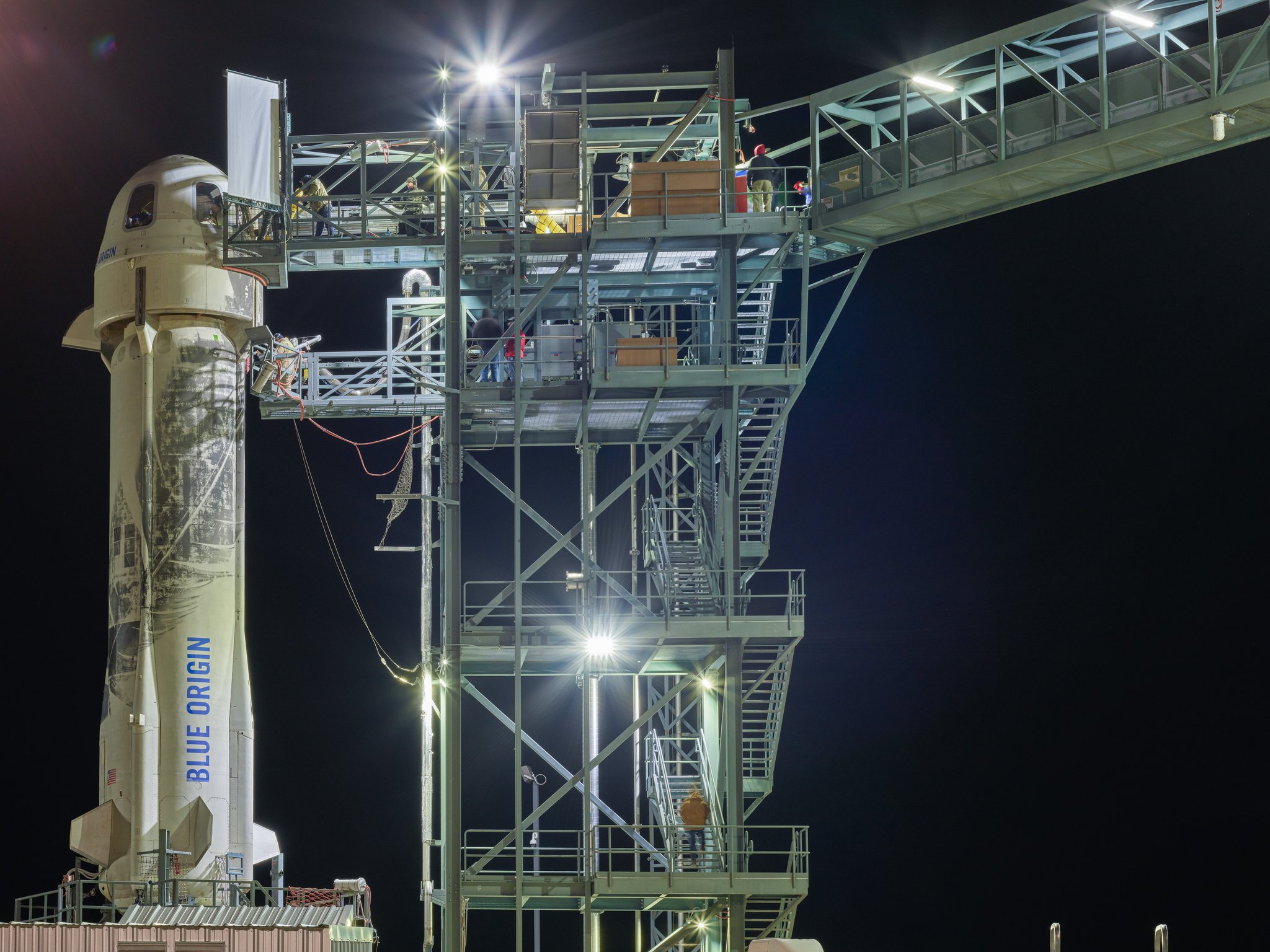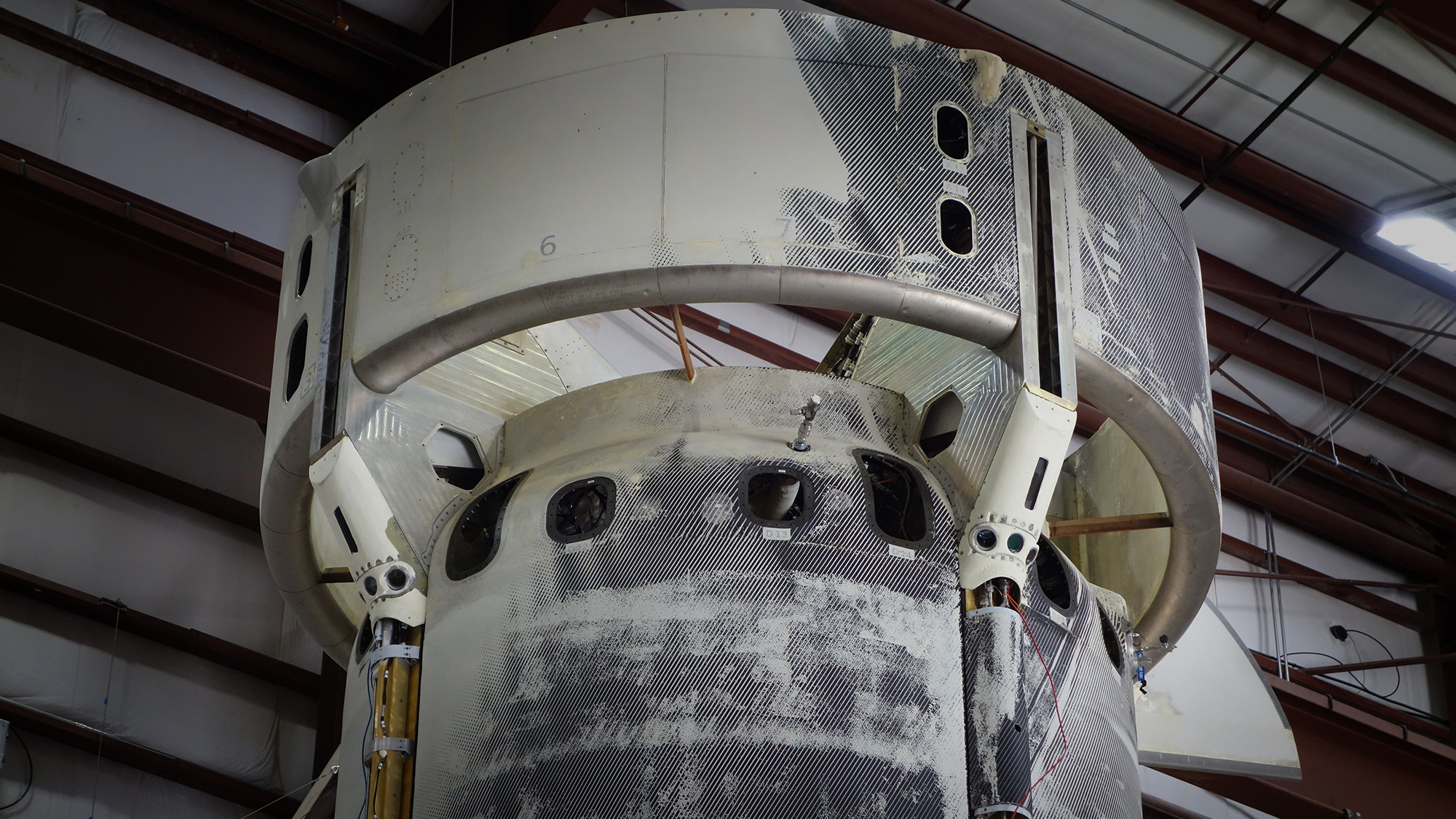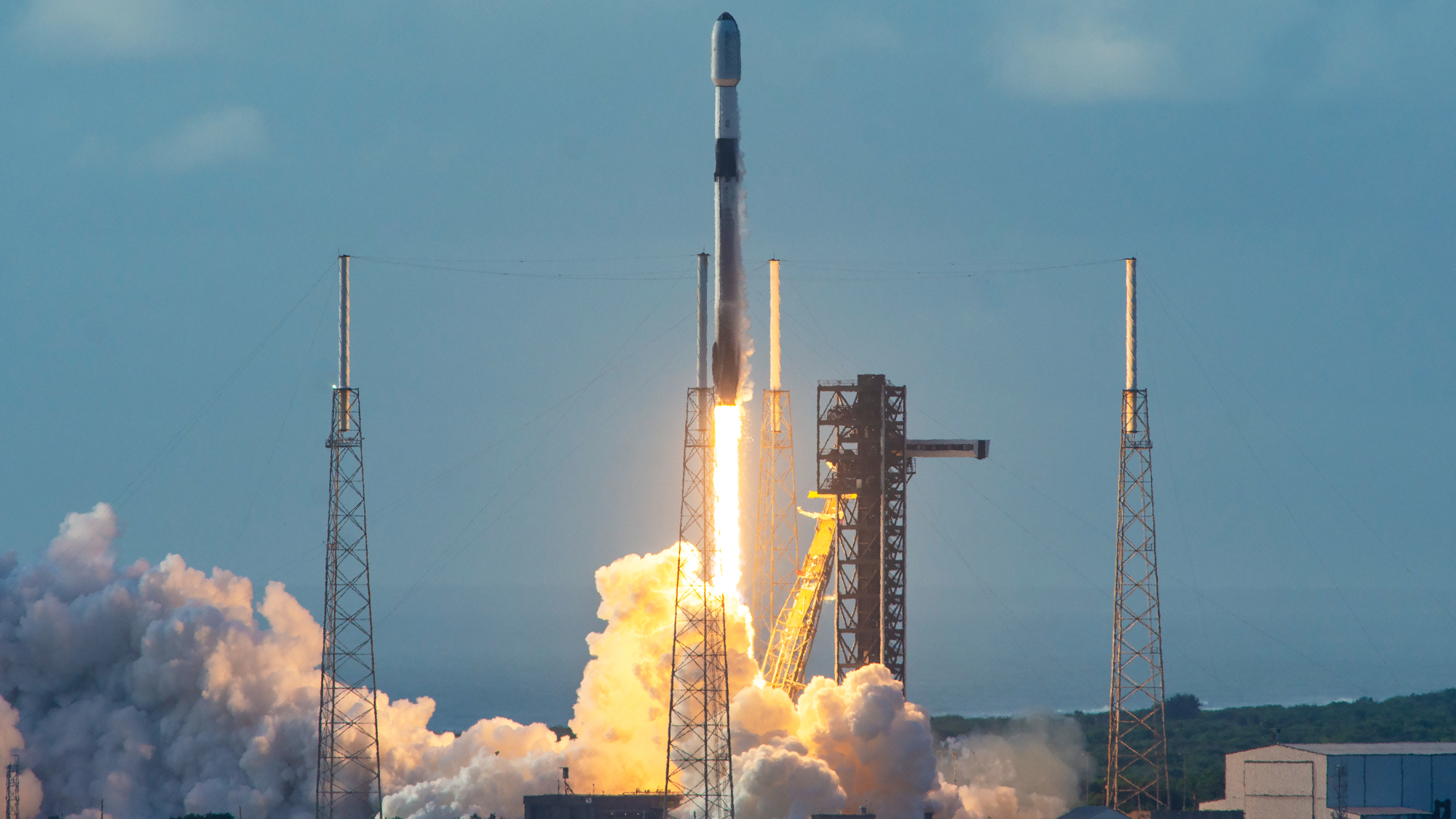Blue Origin scrubs New Shepard rocket launch due to power glitch

Blue Origin called off the planned launch of its New Shepard rocket from West Texas today (Sept. 24), citing a power glitch.
The reusable New Shepard rocket and capsule were originally scheduled to lift off on an uncrewed test flight from the company's West Texas launch facility at 10 a.m. CDT (11 a.m. EDT; 1500 GMT). About an hour before liftoff, Blue Origin delayed the launch by 100 minutes "to allow for the cloud cover to clear in West Texas," the company tweeted this morning.
But as those cloudy skies cleared up, Blue Origin discovered another problem, this time with the scientific payloads inside the capsule.
"We've detected a potential issue with the power supply to the experiments. Launch is scrubbed for today," Blue Origin tweeted about 30 minutes before the newly targeted liftoff time. A new launch date has yet to be announced.
Related: Blue Origin's amazing NS-11 New Shepard test flight in photos
We’ve detected a potential issue with the power supply to the experiments. Launch is scrubbed for today. New launch target forthcoming.September 24, 2020
Hitching a ride to and from space aboard New Shepard are 12 science payloads, though Blue Origin did not specify which payloads were affected by the power glitch. One of the payloads is NASA's Deorbit, Descent and Landing Sensor Demonstration, which will help develop new precision landing technologies for future human missions to the lunar surface.
"The experiment will verify how these technologies (sensors, computers, and algorithms) work together to determine a spacecraft's location and speed as it approaches the moon, enabling a vehicle to land autonomously on the lunar surface within 100 meters of a designated point," Blue Origin officials said in a statement.
Breaking space news, the latest updates on rocket launches, skywatching events and more!


Some other payloads on NS-13 include:
- µG-LilyPond, a floating plant growth system for microgravity environments
- BORE II will test a new system for sampling and anchoring to asteroids
- LAD-2 will demonstrate how liquid and gas interface in microgravity
- Flow Boiling in Microgap Coolers (FBMC), a new cooling technology for keeping spacecraft from overheating
A new launch date for Blue Origin's NS-13 mission will be provided once available.
Email Hanneke Weitering at hweitering@space.com or follow her on Twitter @hannekescience. Follow us on Twitter @Spacedotcom and on Facebook.
Join our Space Forums to keep talking space on the latest missions, night sky and more! And if you have a news tip, correction or comment, let us know at: community@space.com.

Hanneke Weitering is a multimedia journalist in the Pacific Northwest reporting on the future of aviation at FutureFlight.aero and Aviation International News and was previously the Editor for Spaceflight and Astronomy news here at Space.com. As an editor with over 10 years of experience in science journalism she has previously written for Scholastic Classroom Magazines, MedPage Today and The Joint Institute for Computational Sciences at Oak Ridge National Laboratory. After studying physics at the University of Tennessee in her hometown of Knoxville, she earned her graduate degree in Science, Health and Environmental Reporting (SHERP) from New York University. Hanneke joined the Space.com team in 2016 as a staff writer and producer, covering topics including spaceflight and astronomy. She currently lives in Seattle, home of the Space Needle, with her cat and two snakes. In her spare time, Hanneke enjoys exploring the Rocky Mountains, basking in nature and looking for dark skies to gaze at the cosmos.
